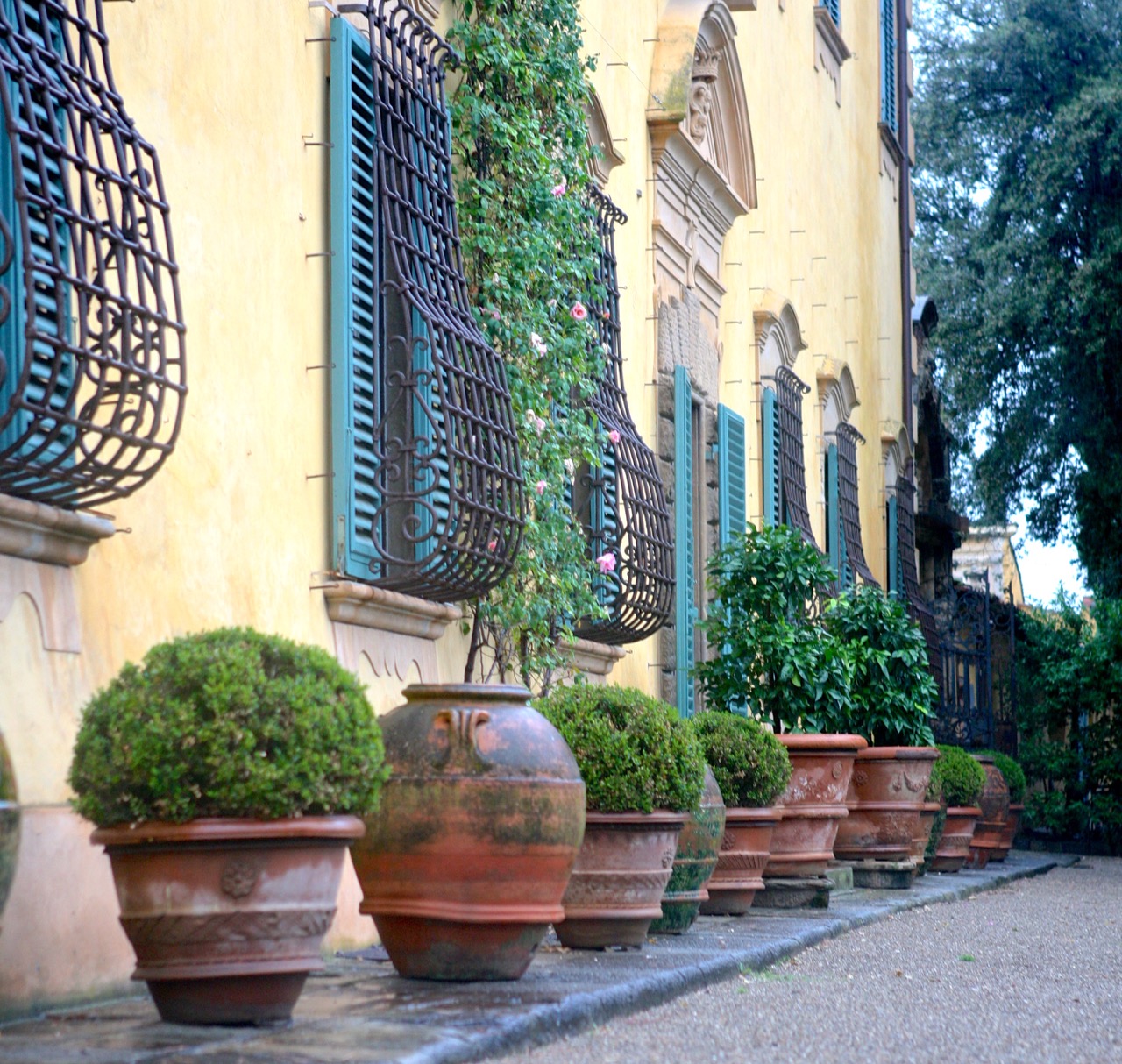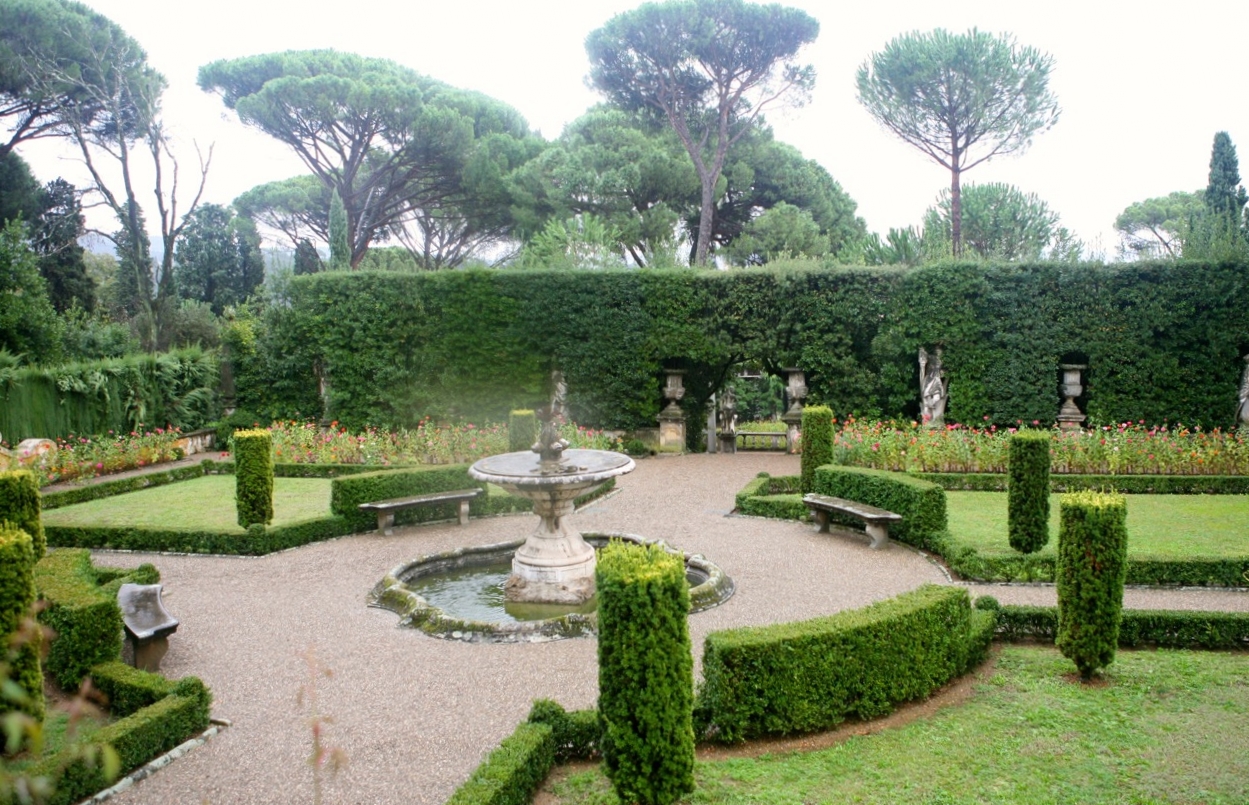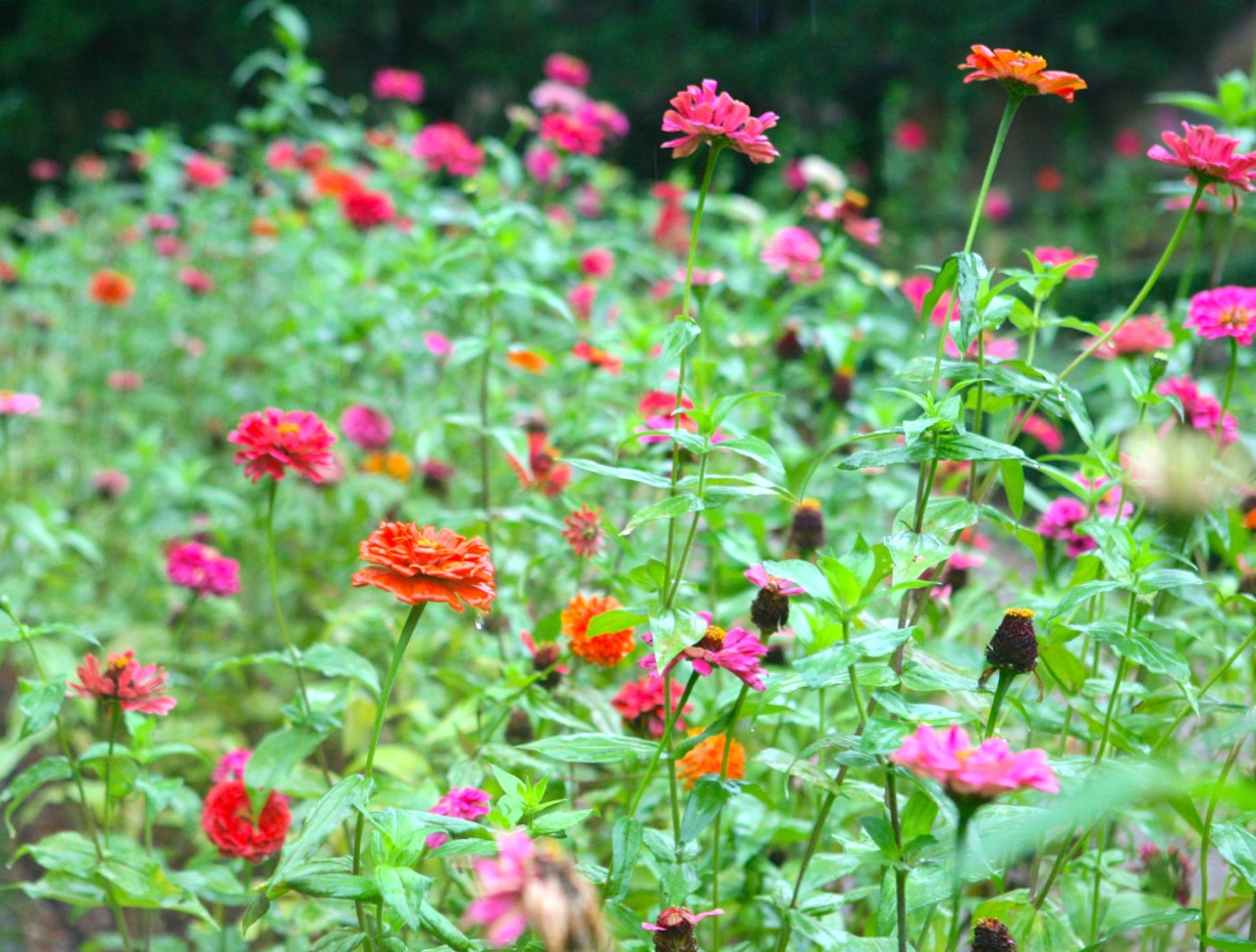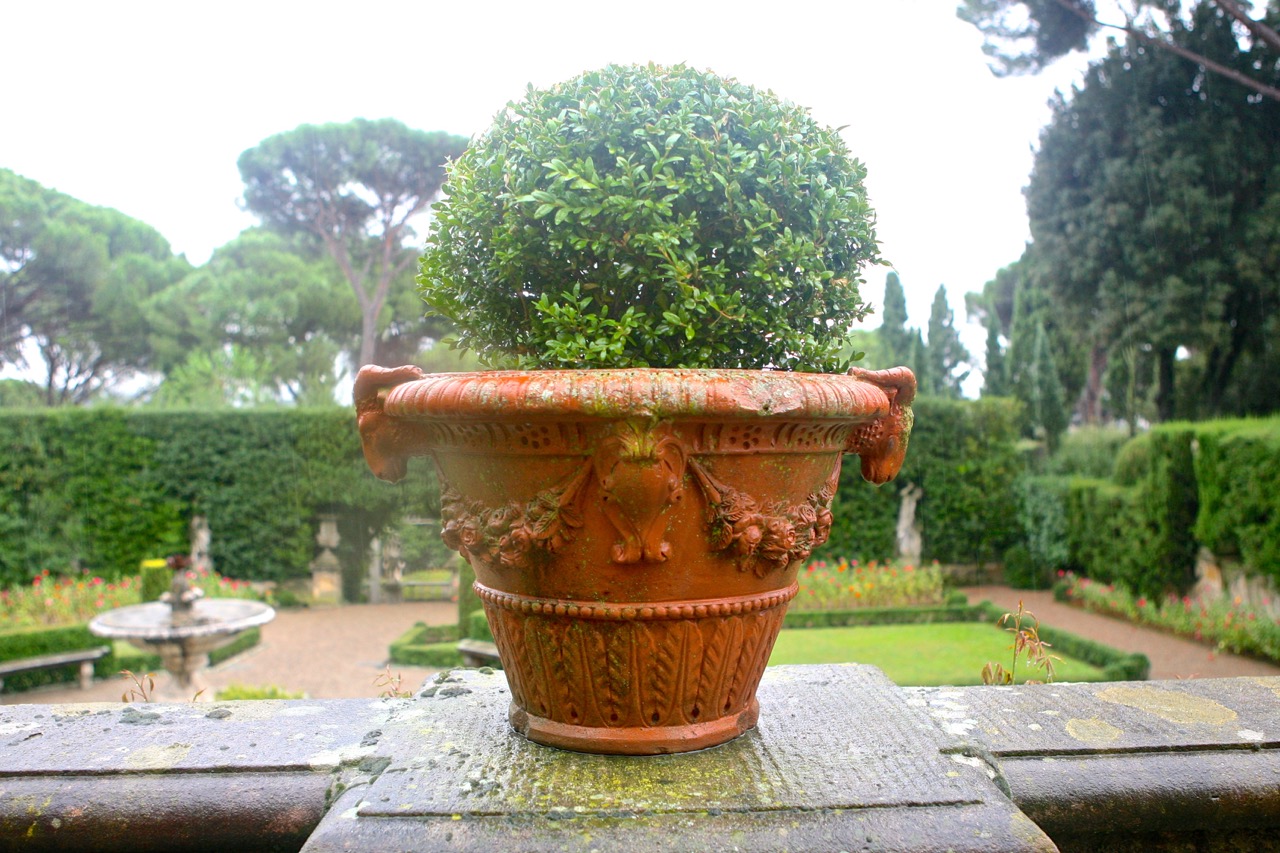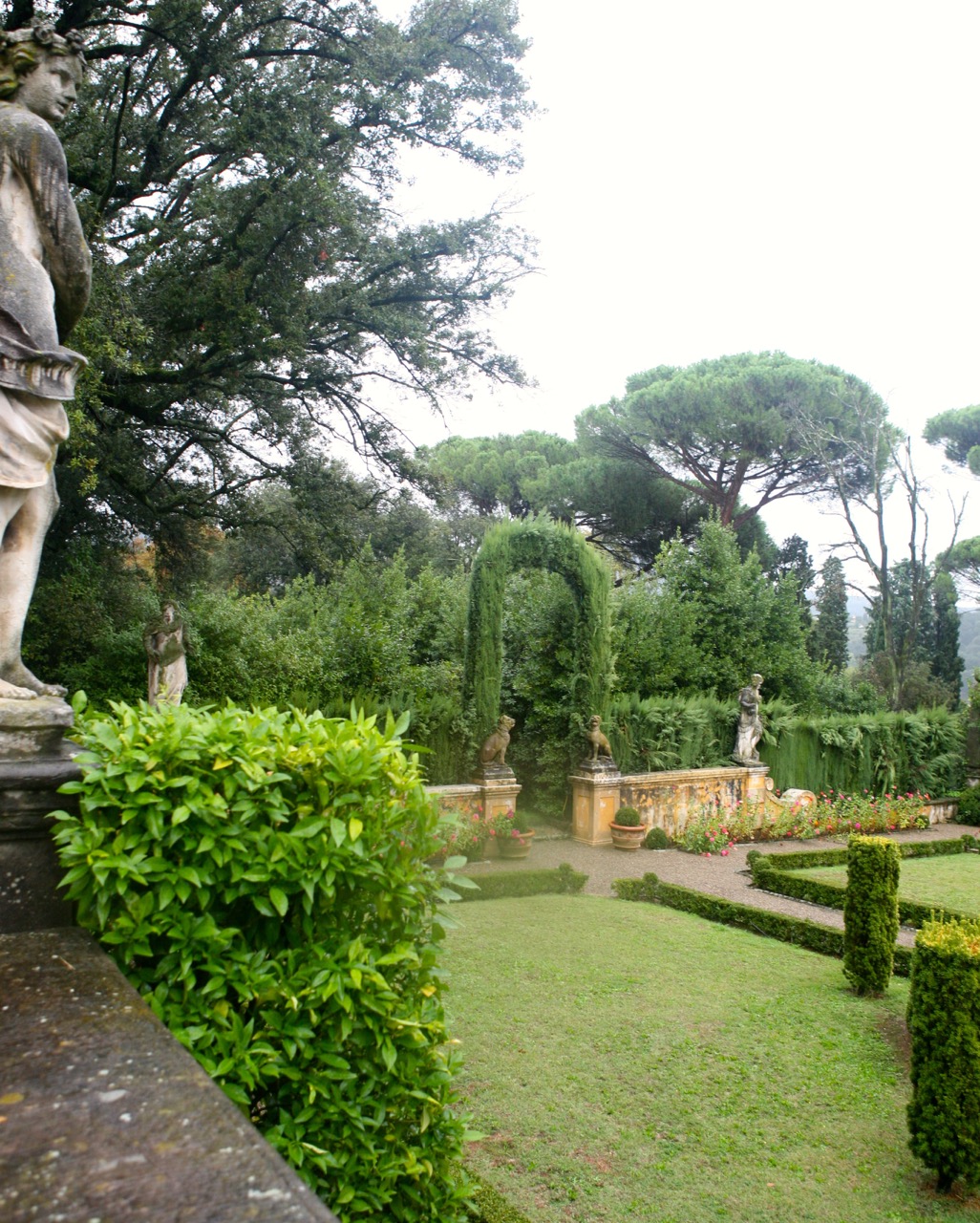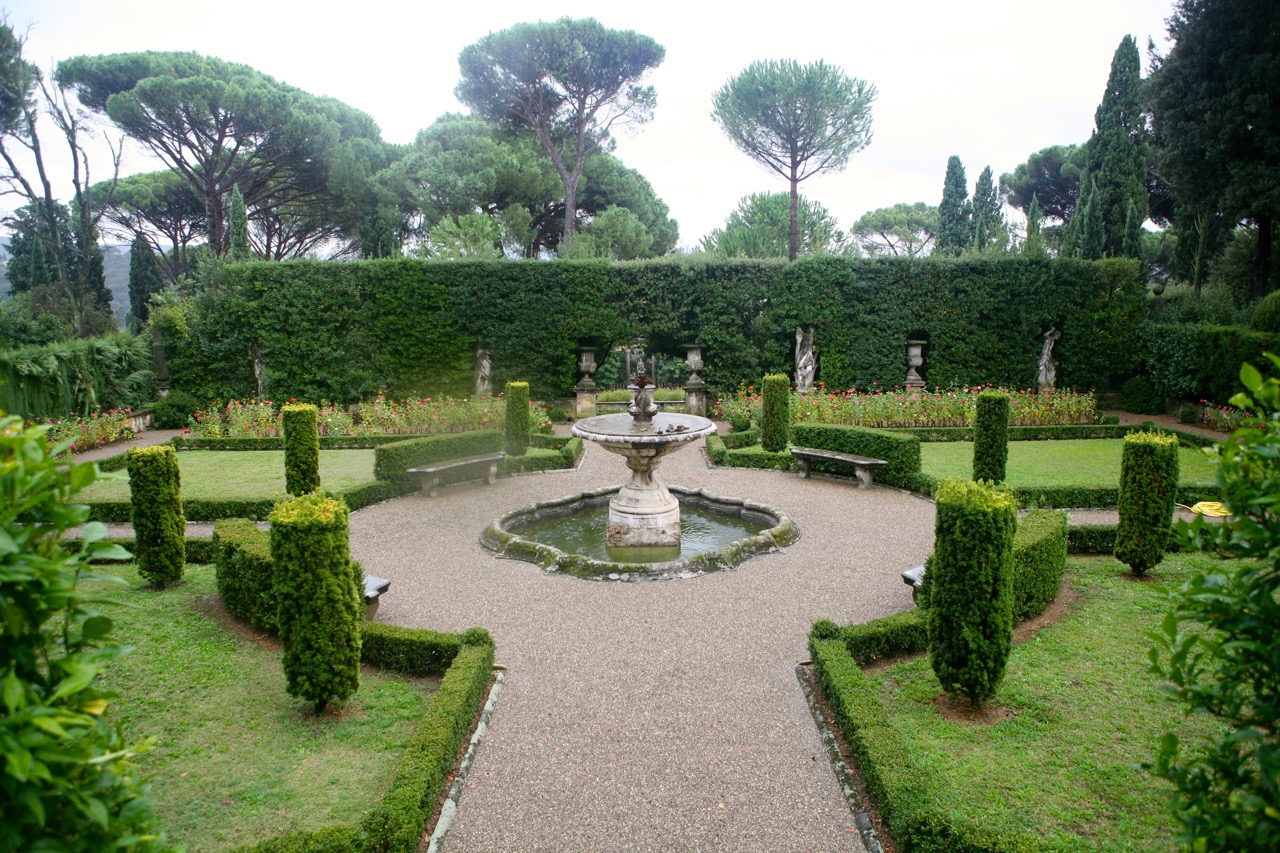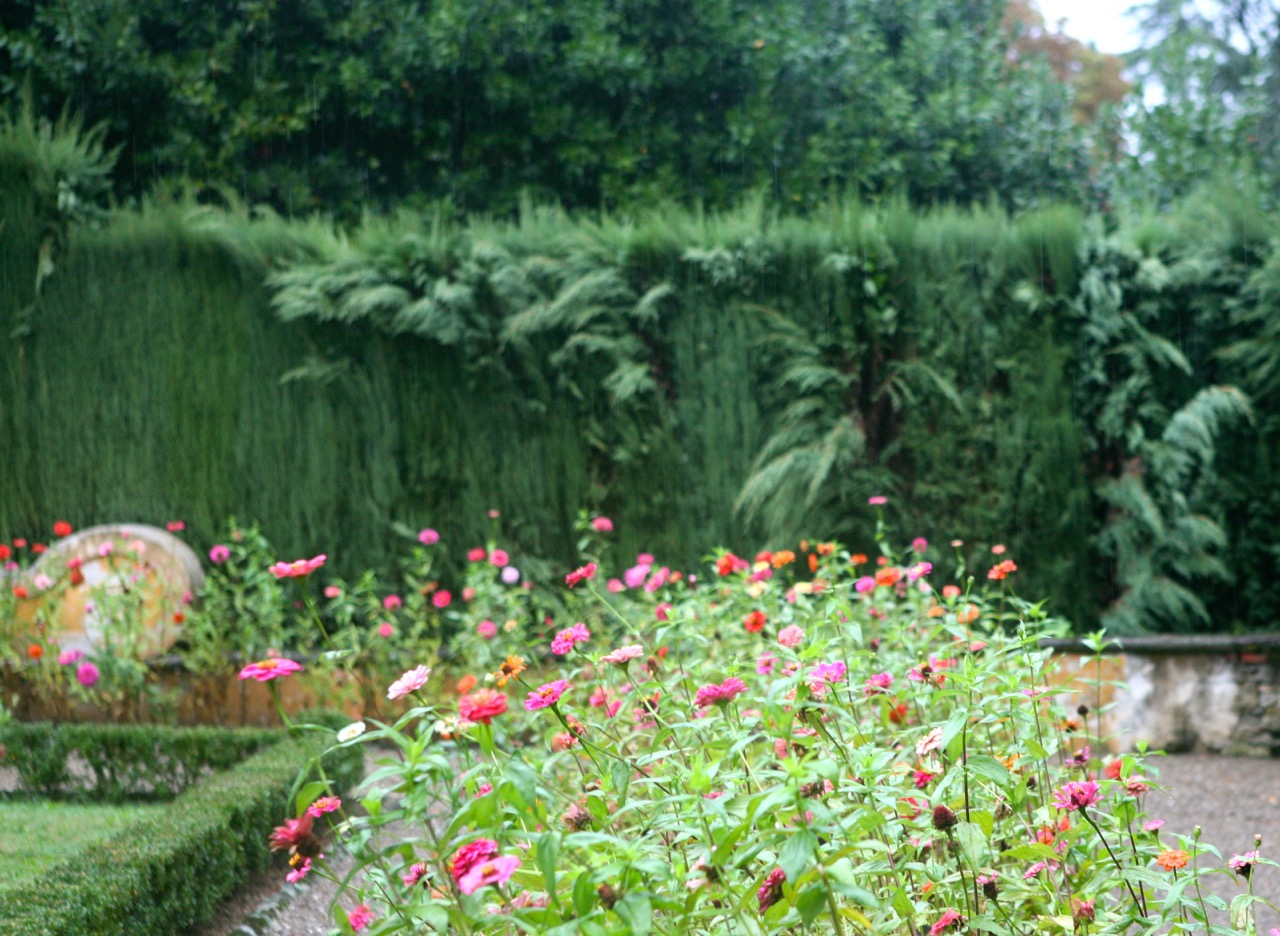With the US elections over, some Americans have joked about moving abroad.
In the early 1900’s, quite a few Americans did just that and Italy was a favorite destination. Among these expats were Hortense Mitchell and Arthur Acton. They settled outside of Florence and dedicated themselves (and Hortense’s wealth) to restoring an old villa and its gardens - Villa La Pietra.
An avenue of cypress line the entry, marking the transition between the outside world and garden.
The Villa was built for a prominent banker in the 1460’s; in the Italian renaissance style, formal gardens and terraces would have surrounded the house. When the Actons arrived around 1900, the original landscape had been replaced by a picturesque one with rolling hills, asymmetrical clusters of trees, and borrowed countryside views.
The Actons spent nearly 30 years creating a new garden. They worked with Colombian landscape architect Diego Suarez, who had already completed a number of similar garden “restorations.” The design combines traditional historic renaissance elements with arts and crafts garden features: formal terraces set on axes, intimate garden rooms, the use of sculpture to define space, and effusive plantings.
Intrigued by what I had read about this garden, I set off on a rainy Florence day to see it for myself.
A short taxi-ride from Florence, the journey ends at a long cypress lined driveway. This avenue marks the separation between the outside world and the Villa, giving one time to decompress from the tensions of the city. Breathtaking olive orchards blanket rolling hills. This place is justly famous for its inspiring views.
The Villa was built in the 1460's for a local banker.
When I arrive everything is closed. No one else is wandering around; the house is shut tight, no sounds of life. The rain starts to fall harder. I knock on the front door not realizing that it is no longer an active entrance. My taxi leaves. I wonder how I will get back. Then, I am excited that I might be stranded there, wandering the gardens alone.
At the appointed tour time, there is a rush of activity. As if on cue, a series of other cars arrives down the long drive to drop off passengers anxious to see the garden. The house comes to life. Loud voices can be heard inside. Doors swing open, office workers greet us, and a tour guide emerges.
The rain comes down harder now, but the tour goes on! The fuzzy spots on the images above are good old-fashioned rain drops on my lens.
The property sits on top of a hill. The surrounding views are spectacular.
The first garden space we come to, the Prima Vasca, is set on an axis to the house. Its central fountain is ringed by cylinders of Irish yews – a reference to the name of the Villa, La Pietra, which means stone pillar. Criss-crossing paths lead to other garden rooms. These first rooms show how the arts and crafts garden elements of flowering borders and intimate spaces work well with the renaissance style elements: geometry, repetition, and stonework. Openings in hedges and sculptures invite visitors to venture deeper into the landscape.
The work at La Pietra set off a revival in Italian renaissance garden. Its success led to more work for Suarez including the famous garden Vizcaya in Miami, Florida.
The Actons left La Pietra to their son, historian and writer Harold Acton, who in turnleft the villa to New York University. Harold’s vision was to preserve the “intellectual, cultural and artistic life” of the villa. NYU maintains the estate as if the Actons still lived there. The Villa, art collection, and gardens are considered Cultural Heritage by the Italian Ministry of Fine Arts.
If you were to leave the country, where would you live? What type of garden would you create there?
Hortense Mitchell and Arthur Acton get around in style in their new Fiat, 1903. Source: http://lapietra.nyu.edu

